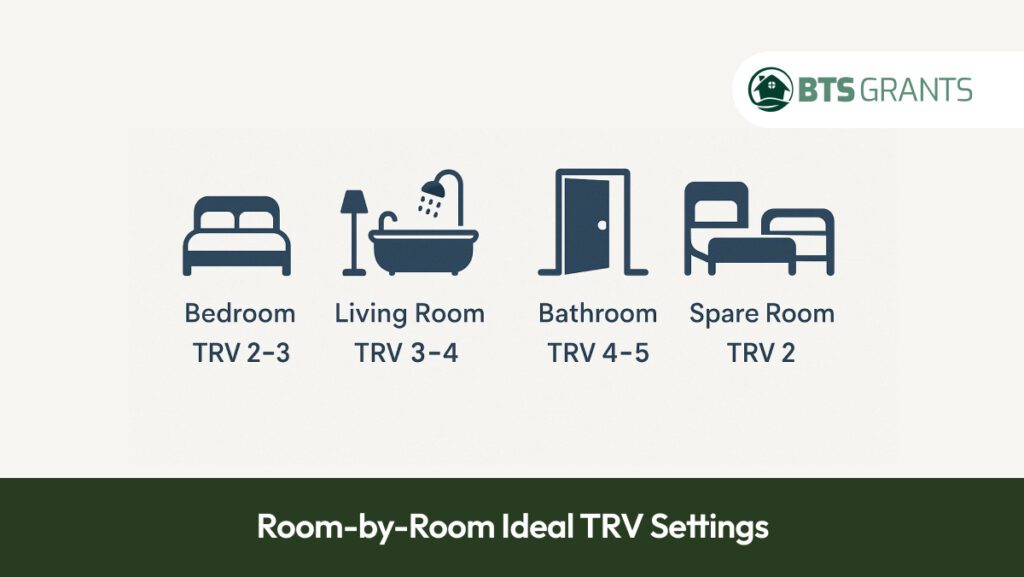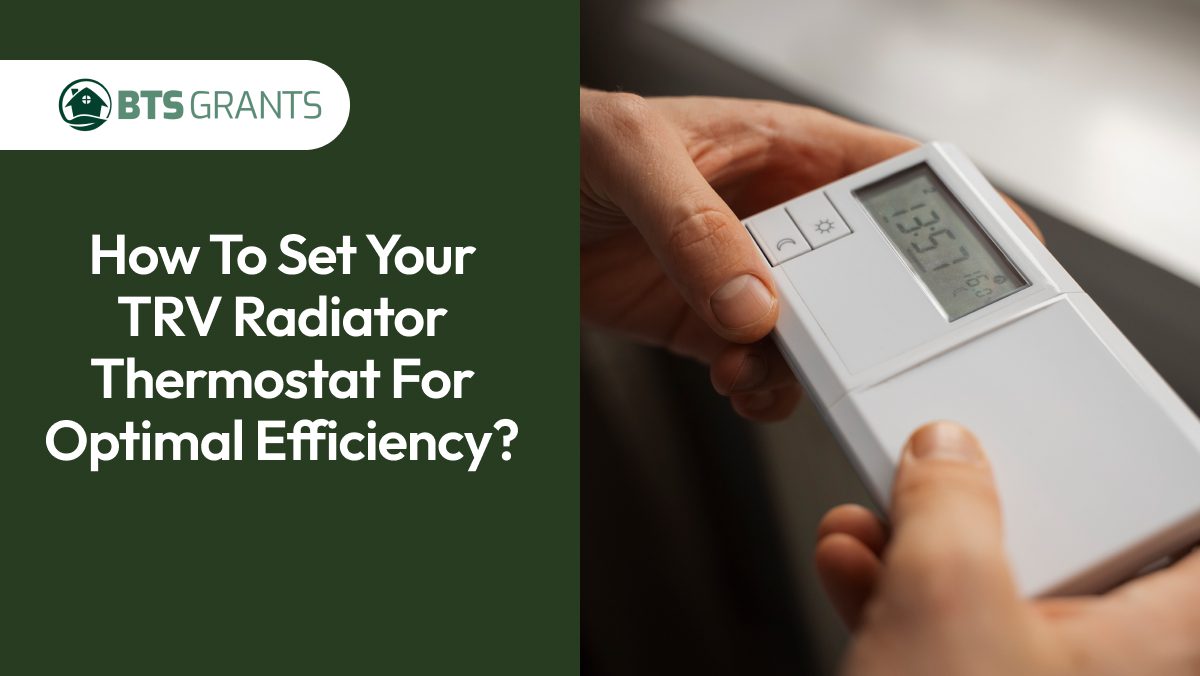A Thermostatic Radiator Valve, or TRV Radiator Thermostat, is a small dial located on the side of your radiator. Still, it can have a surprisingly large impact on how well your home heats up. When used properly, TRVs can help you maintain the right temperature in every room, lower heating costs, and create a more comfortable living environment without constantly adjusting your boiler.
Whether you’re trying to reduce your heating or simply want to stop certain rooms from overheating, correctly setting your TRVs can make a significant difference.
This blog covers it all: from how TRVs work, to the best settings in each room, through to troubleshooting, and even the role of a central heating inhibitor in keeping your system healthy.
What Is a TRV Radiator Thermostat?
A TRV is a small valve attached to your radiator that lets you control the temperature of individual rooms. Instead of your boiler heating the whole house to one uniform temperature, TRVs make it possible to manage each radiator independently.
This means:
- Your living room can stay warm
- Your bedroom can stay cooler for better sleep
- And your hallways won’t waste heat
If you’re looking into energy-efficient heating upgrades, you may also benefit from grants like ECO4.
How TRVs Work in Your Central Heating System
Inside every TRV is a temperature-sensitive sensor (usually wax or liquid). As the room heats up, the sensor expands and slowly closes the valve, restricting the flow of hot water. When the room cools down, the valve opens again.
This leads to three major benefits:
- Less wasted energy
- More stable temperatures
- Lower heating bills
However, TRVs can only work properly if water can flow freely through the radiator. Sludge, rust, and debris inside the system will narrow this flow, which is why using a central heating inhibitor, boiler inhibitor, or radiator inhibitor is so important to maintain your system in healthy order.
TRV Number Settings Explained (0–5 Scale)
Most TRVs don’t show temperatures — they use numbers. Here’s what each number really means in terms of warmth:
TRV Setting Table
| TRV Setting | Approx Temperature | Best For |
| 0 | Off | Unused or storage rooms |
| Frost/Snowflake | 5–7°C | Prevent frozen pipes |
| 1 | 10–12°C | Hallways, landings |
| 2 | 15–17°C | Bedrooms |
| 3 | 18–20°C | Living rooms |
| 4 | 21–23°C | Bathrooms |
| 5 | Maximum | Quick boost, short use only |
Optimising TRV settings also helps improve your home’s EPC rating.
Best TRV Settings for Each Room (Room-by-Room Guide)


Different rooms serve different purposes — and your TRV settings should match that.
Best TRV Settings Table
| Room | TRV Setting | Notes |
| Living Room | 3 | Comfortable daytime warmth |
| Bedroom | 2 | Enhances sleep and eliminates overheating |
| Kitchen | 1–2 | Cooking raises natural heat |
| Bathroom | 3–4 | Warmth to avoid condensation and discomfort |
| Hallway | 1 | Only needs minimal heating |
| Spare Room | Frost | Prevents damp, saves money |
To improve TRVs, pair them with free insulation upgrades.
How To Set Your TRV Radiator Thermostat for Optimal Efficiency
Follow these steps to make your heating system function in perfect order:
Step 1: Start with recommended settings
Use the table above as your baseline.
Step 2: Give 24 hours
TRVs act slowly – give each room time.
Step 3: Adjust for comfort
You prefer a warm living room? Move from 3 to 3.5 or 4.
Step 4: Keep doors closed
This helps TRVs read the temperature correctly.
Step 5: Maintain your heating system
A TRV can only work if water flows smoothly. That’s why adding the best central heating inhibitor is vital — it prevents sludge and corrosion.
Common TRV Mistakes to Avoid
Here are the most frequent errors homeowners make:
- Setting every TRV to “5”
- Turning radiators fully off in cold rooms
- Blocking radiators with furniture
- Leaving windows open while heating
- Ignoring system maintenance (e.g., skipping inhibitor)
When combined with a healthy heating system and proper TRV use, a free boiler replacement can drastically improve efficiency.
Why TRVs Need a Healthy System (The Role of Heating Inhibitors)
A central heating inhibitor is a protective chemical that keeps your system clean by stopping rust, scale, and sludge from forming.
Without an inhibitor, you risk:
- Cold spots on radiators
- TRVs not responding
- Higher energy bills
- Reduced boiler lifespan
- Blocked valves and pipes
Common inhibitor types include:
- Boiler inhibitor
- Radiator inhibitor
- Central heating corrosion inhibitor
- Central heating protector
- Products like “Central Heating Inhibitor Screwfix”
How much inhibitor do you need?
Most homes need 1 litre for up to 10 radiators.
So, how much inhibitor for 7 radiators?
1 litre is enough.
How To Add an Inhibitor to Your Central Heating System


There are several ways to add an inhibitor to your system. Here’s a simplified comparison:
Inhibitor Application Methods
| Method | Added Through | Difficulty | Notes |
| Radiator | Bleed valve | Easy | Best for DIY users |
| Filling Loop | Boiler | Medium | Requires some care |
| Towel Rail | Bathroom | Easy | Good access point |
| Magnetic Filter | Boiler area | Medium–Hard | Often done by engineers |
If you feel your system needs more than just an inhibitor — like upgraded radiators, a boiler, or insulation — consider a free assessment.
TRV Troubleshooting Guide
Problem → Cause → Fix Table
| Problem | Likely Cause | Fix |
| The radiator stays cold | TRV pin stuck | Free pin / replace TRV head |
| Cold bottom / warm top | Sludge buildup | Add inhibitor/flush system |
| Room overheats | TRV too high | Lower setting |
| TRV doesn’t respond | Faulty head/sensor | Replace TRV |
A free home survey can help diagnose system-wide issues.
Do You Need TRVs in Every Room?
TRVs are recommended in almost every room except the one with your main wall thermostat.
Having both can confuse the boiler and lead to inefficient heating.
If you’re unsure what your property needs, it’s worth checking if you’re eligible for ECO4 support.
When Should You Call a Heating Engineer?
You should seek professional help if:
- TRVs remain unresponsive
- Radiators are cold despite inhibitor use
- You notice persistent sludge
- You want TRVs installed properly
- The system is outdated or noisy
Conclusion
TRVs are one of the simplest ways to improve comfort and efficiency in your home. When they’re set correctly — and combined with proper heating system maintenance and a central heating inhibitor — they can significantly reduce your heating costs and extend the life of your boiler. For even greater long-term savings and comfort, many households qualify for free energy-efficient upgrades, including boiler replacements and insulation, through government-backed schemes.
FAQ’S
Most living rooms perform best at 3, while bedrooms are usually comfortable at 2.
Yes — TRVs prevent overheating and fine-tune each room’s temperature, lowering unnecessary energy usage.
Yes, except for the one in the same room as the main thermostat.
Every 1–2 years, or whenever the system is drained.
1 litre is enough.
You risk sludge buildup, noisy pipes, cold spots, and reduced boiler life.





